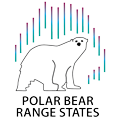10.3.1 Harvest Risk Assessment for Polar Bears: A State-Dependent Approach
10.3.1 Harvest Risk Assessment for Polar Bears: A State-Dependent Approach
Description
Presentation Title: Harvest risk assessment for polar bears: a state-dependent approach that considers climate change and data quality
Summary: The conservation of many wildlife species requires understanding the demographic effects of climate change, including interactions between climate change and harvest, which can provide cultural, nutritional or economic value to humans. We present a demographic model that is based on the polar bear Ursus maritimus life cycle and includes density-dependent relationships linking vital rates to environmental carrying capacity (K). Using this model, we develop a state-dependent management framework to calculate a harvest level that (i) maintains a population above its maximum net productivity level (MNPL; the population size that produces the greatest net increment in abundance) relative to a changing K, and (ii) has a limited negative effect on population persistence. Our findings indicate that it is possible to minimize the demographic risks of harvest under climate change, including the risk that harvest will accelerate population declines driven by loss of the polar bear’s sea-ice habitat. This requires that (i) the harvest rate – which could be 0 in some situations – accounts for a population’s intrinsic growth rate, (ii) the harvest rate accounts for the quality of population data (e.g. lower harvest when uncertainty is large), and (iii) the harvest level is obtained by multiplying the harvest rate by an updated estimate of population size. Environmental variability, the sex and age of removed animals and risk tolerance can also affect the harvest rate.
We demonstrate application of the state-dependent approach to the Baffin Bay and Kane Basin subpopulations, using estimates of demographic parameters and other biological information from recent subpopulation assessments. Harvest strategies were defined in terms of key elements that can be managed, including harvest rate and level, the sex and age composition of removed bears, the management interval (i.e., number of years elapsed between management changes based on updated subpopulation data), and the precision of available data. Harvest strategies were evaluated over three polar bear generations (approx. 35 years) against management objectives and risk tolerances provided by the authorizing agencies. For both subpopulations, we included projected trends in K based on remote-sensing sea-ice data and other ecological information. Multiple scenarios were considered for survival rates, due to uncertainty and potential bias in the available estimates of survival. The demographic model was able to reproduce plausible trends for the recent histories of both subpopulations. The state-dependent management approach was able to identify harvest strategies that met management objectives while considering the effect of climate change and data quality. Our findings were conditional on the existence of a coupled research-management system, and on the assumption that climate change would not have negative impacts above and beyond the projected trends in K.
